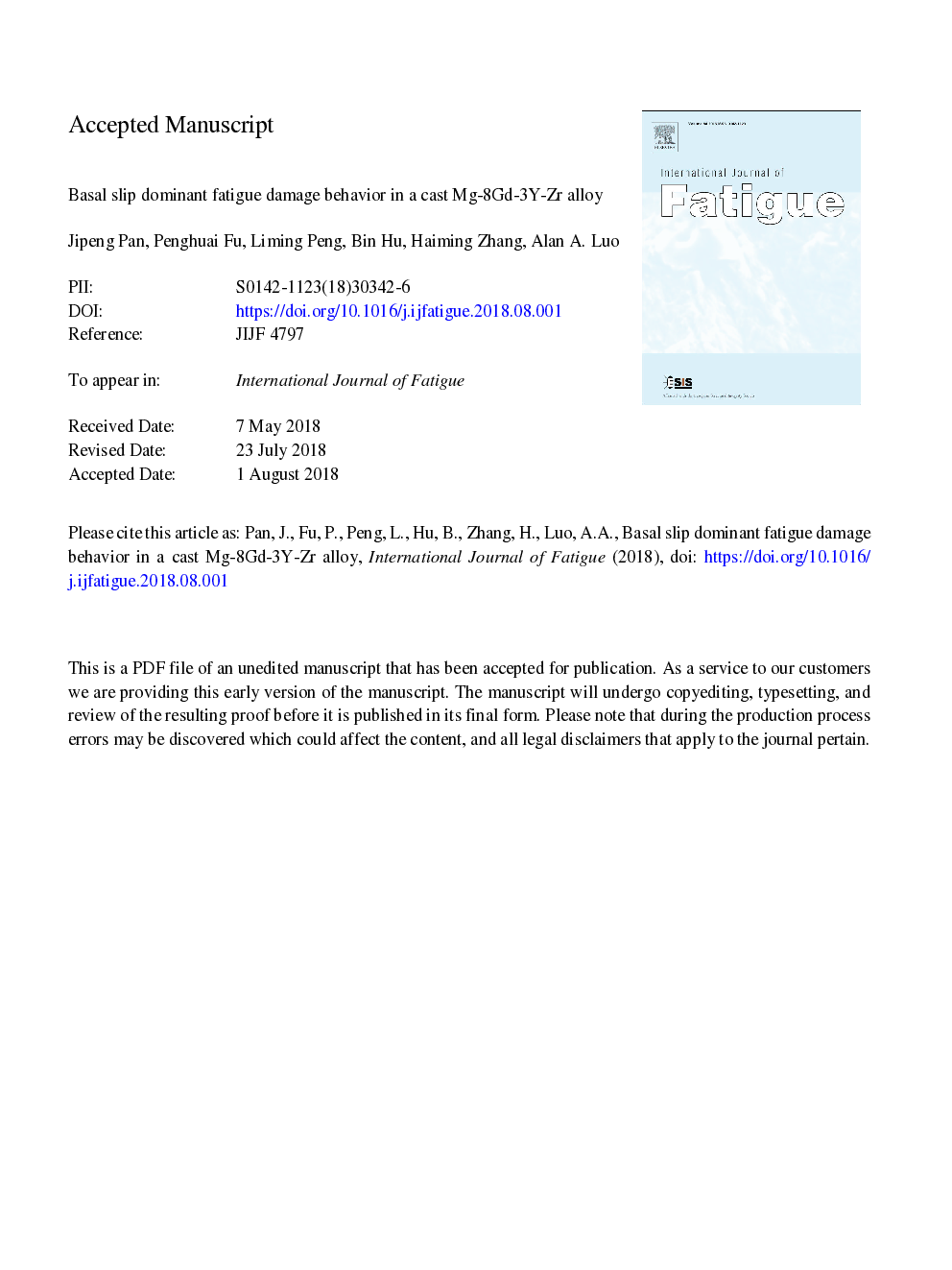| Article ID | Journal | Published Year | Pages | File Type |
|---|---|---|---|---|
| 10140260 | International Journal of Fatigue | 2019 | 35 Pages |
Abstract
Low fatigue strength has been a major barrier for structural applications of cast magnesium alloys. It is important to understand the fatigue mechanisms and improve the fatigue lives of these alloys. Stress-controlled high-cycle fatigue behaviors of cast Mg-8Gd-3Y-Zr (wt.%) alloy in as-cast, solution treated (T4) and aged (T6) conditions were studied at room temperature, and the fatigue damage morphologies were carefully characterized. During high-cycle fatigue, only basal slips were observed on the surface of fatigue samples under different stress amplitudes, which suggests that basal slip is the dominant fatigue damage mechanism. The T4 and T6 alloys show distinguishing different damage morphologies at grain interiors: there are serried PSMs in the T4 alloy and only sparse PSMs in the T6 alloy. Basal slip deformation can be transferred among basal planes in the “soft” T4 alloy, while only limited on several PSBs in the “hard” T6 alloy. In the T4 alloy, a great number of basal slip planes in a single grain and most of the grains participate in the fatigue deformation, resulting higher fatigue strength (80â¯MPa, for 107 cycles). For T6 alloy, the fatigue deformation only happens in several PSBs and most of the grains have no plastic deformation, resulting lower fatigue strength (70â¯MPa).
Related Topics
Physical Sciences and Engineering
Engineering
Mechanical Engineering
Authors
Jipeng Pan, Penghuai Fu, Liming Peng, Bin Hu, Haiming Zhang, Alan A. Luo,
